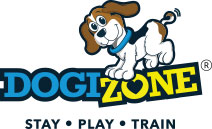Overweight Dog
Dogs, just like people, are healthier and less prone to diseases and musculoskeletal conditions when they are fit and in the healthy weight range. In fact, the same issues that can lead to weight gain and obesity in humans are the cause of weight problems in dogs. You may be wondering how to know if your dog is overweight.
The leading causes of dog weight gain are overeating and lack of exercise. For our dog’s wild ancestors this was simply not a problem as they had to hunt and forage for food, which provided the necessary exercise to burn off calories and prevent packing on the pounds.
Most dog’s today are more like couch potatoes. Even if they are exercised on a daily basis and spend time outside, they are only a fraction as active as their ancestors. It is very easy for a few extra treats and a few days of laying around the house to start to add up for a dog.
To make matters more problematic for modern dogs, genetics also play a factor. Some breeds are bred to be heavier dogs while others are bred to be lighter and smaller. While it is possible to see an overweight Greyhound or Whippet, it is much more likely to see an overweight Pug or English Bulldog simply because of genetics and natural behaviors. Overweight Dog
The Finger Test
While you can easily spot obese dogs because of their large size relative to other breeds and to their skeletal structure, it can be more challenging to determine if a dog is moving from a healthy weight to overweight. Overweight Dog
This can be even more complicated if your dog has a thick double coat as it can be challenging to know what is hair and what is actual body mass. To determine if your dog is in a healthy weight range, too thin or too heavy, use the finger test.
Place the tips of your fingers against the dog’s skin about midway along and midway down the rib cage. Wiggle your fingers into the coat if necessary. Move your fingers along the surface of the skin parallel to the ground without any pressure. If your dog is in a healthy weight range, you should be able to feel each rib, but it should have a thin cushioning of fat over and between the ribs.
If the bones are at the surface and there are notable indentations between the ribs, the dog is too thin. When you cannot feel the ribs without some pressure, your dog is overweight. If you can’t feel the ribs even with moderate pressure your dog is obese.
Additionally, feel just above the base of the tail where it joins to the body. It should be smooth with just a slight layer of fat over the tail bone. If you cannot feel the slight fat covering, not a fat pad, the dog is too thin. When a fat pad is present, the dog is too heavy.
The Side and Top View
For short coats or single coated dogs, look from the side and the top. From the side, there should be a distinct difference between the diameter of the rib cage and the abdominal area, but this does vary from breed to breed. This is known as the abdominal tuck.
From above, the dog should have a slight hourglass figure from the wider rib cage to the narrower abdomen and then slightly wider hips. Again, this can vary significantly by breed, and it can be difficult to see with some coat types.
Now you should have a better idea of how to know if your dog is overweight. But, when in doubt, talk to your vet. Not only will this help to determine if your pet is overweight, but you can also plan a strategic diet and exercise plan to get your pooch fit.
